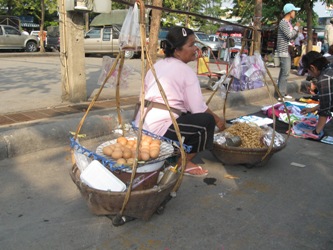The global egg industry is shifting towards a new pattern

Production and consumption of table eggs around the world has changed significantly in recent decades. Less developed and threshold countries are now playing a much stronger role in global egg production and trade. With Asia undoubtedly taking the lead.
Global shell egg production increased from 35.2 million tonnes in 1990 to 61.2 million tonnes in 2008 or by 73.6%. It was, however, not a homogeneous growth as can be seen from the data in Table 1. The highest absolute increase was in Asia with 22 million tonnes, followed by North America with 2.7 million tonnes, Central and South America with 1.6 million tonnes and Africa with 1 million tonnes. The remarkable increase of the production volume in Asia led to a considerable shift in the spatial pattern of egg production. Whereas in 1990 the contribution of Asian and European countries to the overall global production was still quite similar, the situation had completely changed in 2008. With a share of 58.6%, Asia was in an dominating position. In the same time period Europe lost almost half of its former share, all other continents were also not able to maintain their former contribution. Europe was the only continent with an absolute decrease of the production volume, it lost 1.5 million tonnes. This was mainly due to the socio-economic transformation process in Eastern Europe. The described spatial shift reflects the dynamics of egg production in several less developed and threshold countries.
The data in Table 2 documents the dramatic spatial shift which occurred in egg production in the analysed time period. In 1990, developed countries contributed 52.5% to the global production volume, threshold countries 36% and less developed countries 11.5%. Only ten years later, the situation had changed thoroughly. Threshold countries were in a leading position with a share of 56.4%. Developed countries had lost almost 20% of their former share. In spite of an absolute growth in production volume, the contribution of less developed countries was lower than in 1990.In 2008, threshold countries had further strengthened their position. In developed countries, production increased again, but growth rates were much lower than in less developed and threshold countries so that their contribution to the global production volume fell by another 4%.A closer look at the dynamics in the development classes in the analysed time period reveals that of the total increase of 26 million tonnes, 23.6 million tonnes or 90% were contributed by threshold countries and almost 3.3 million tonnes by less developed countries. Developed countries, on the other hand, lost about 1 million tonnes of egg production. In Table 3, the ten leading egg producing countries, independent from their development status, are listed for 1990 and 2008. Of the ten leading countries in 2008, four were located in Asia, three in the Americas and three in Europe. Only one EU member country, France, was left among the top listed egg producing countries. Six of the ten leading countries were threshold countries and four developed countries. This documents the extraordinary role that threshold countries played in the dynamics of global egg production.
Only about 2.6% of global egg production was traded in 2008. In contrast, 15.5% of poultry meat was exported in the same year. The main reason for the comparatively low figure is the fact that shell eggs cannot be deep frozen unlike meat. On the other hand, eggs have the advantage that they have a relatively long shelf life even without cooling and that they can be consumed as a whole egg without the necessity to store and refrigerate part of it, as is the case with pork or poultry meat. Table 4 shows that global egg exports were dominated by developed countries even though their share decreased by 16.9% between 1990 and 2008. Threshold countries could expand their contribution by 15.8% whereas that of less developed countries increased by only 1.1%. A closer look at the absolute growth rates shows that the export volume of threshold countries increased by almost 350,000 tonnes (+ 324%), that of less developed countries by 45,750 tonnes (+ 140.6%) and that of developed countries by 361,600 tonnes (+ 50.6%). In spite of a smaller share, developed countries are still dominating shell egg exports.
In a special report to the IEC, the author of this article presented a projection of the egg demand in 2015 compared to 2005 (Windhorst, 2008). It was estimated that in 2015 another 12 million tonnes of shell eggs would have to be produced to meet the additional demand (Table 6). Asia would then contribute 62.1% to global egg production, Europe 14.3%. In that report, the dynamics of egg production was not analysed on the basis of the development status of countries.
A new spatial pattern
Because of our own limited experience and the lack of detailed studies dealing with the organisation and spatial pattern of the egg industry in less developed and threshold countries and because of the large number of research papers and the availability of statistical data on the egg industry in developed countries, we only too often forget that the extraordinary development of global egg production over the past twenty years has mainly been a result of the dynamics in a rather limited number of threshold and a few less developed countries. This not only forces us to deal more thoroughly with the egg industry in these countries but also to realise that the centre of egg production is no longer located in the USA or in Western Europe but in Southern, Eastern and South-Eastern Asia and that a new regional cluster is being formed in some countries in Central and South America. This is the new spatial pattern of the global egg industry.
Figure 1 – Classification of countries according to their development status.
Figure 2 – Projected population development between 2010 and 2020 by countries.
Figure 3 – Egg production by countries and their development status in 2008.
MORE INFORMATION faostat.fao.org |













